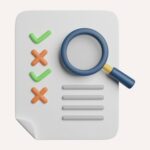Credit card debt can be a heavy burden and can cause undue stress and financial instability.
It’s critical for you to reduce your debt faster not only to save money on interest payments but also to get back control of your financial life.
This comprehensive article will introduce 17 effective methods for tackling credit card debt, providing practical steps for moving towards a debt-free future.
How to Reduce Credit Card Debt
1. Create a detailed budget
A realistic and manageable budget is the foundation of any successful debt reduction plan. To create one, start by tracking your income and expenses.
Categorize your spending, and identify areas where you can cut back. Make sure to allocate a portion of your income towards debt repayment while still covering essential expenses.
2. Prioritize your debts
Focusing on high-interest debts first can save you money in the long run. Two popular methods for prioritizing debts are the snowball and avalanche methods.
The snowball method involves paying off debts from smallest to largest balance, while the avalanche method targets debts with the highest interest rates first. Choose the approach that works best for you and stay consistent.
3. Negotiate for lower interest rates
Having lower interest rates can really make a huge difference in the overall amount that you’ll pay. You can contact your credit card companies and request a interest rate reduction.
Be polite, emphasize your history as a customer, and mention any competing offers you’ve received. If successful, a lower interest rate can help you pay off your debt faster.
4. Consider balance transfer credit cards
A balance transfer credit card can consolidate high-interest debt onto a card with a lower interest rate, often with an introductory period of 0% interest.
You need to be understand about any balance transfer fees and the duration of the promotional rate. You should compare offers to find the best option that will suit your financial situation.
5. Use windfalls to pay off debt
Apply any unexpected money, such as tax refunds, bonuses, or inheritance, towards your debt.
This can have a significant impact on reducing your outstanding balance and provide a psychological boost that motivates you to continue paying down your debt.
6. Implement the debt snowflake method
The debt snowflake method involves applying small, daily savings towards debt repayment. These can come from cutting back on discretionary spending or finding creative ways to save.
Over time, these small amounts add up and can make a big difference in your debt repayment progress.
7. Cut expenses and find ways to save
To accelerate debt repayment, identify areas where you can reduce expenses. This may involve canceling subscriptions, cooking at home, or switching to generic brands.
Embrace a frugal mindset and prioritize saving money over non-essential spending.
8. Increase your income
Earning extra money can help you pay off debt faster. Consider taking on a side hustle, freelancing, or seeking higher-paying employment.
The surplus income can make a significant difference in your ability to pay down debt.
9. Automate your payments
Setting up automatic payments can help you avoid late fees and maintain a consistent payment schedule.
Contact your creditors to arrange automatic payments that align with your pay cycle. This can also help improve your credit score by ensuring timely payments.
10. Create a debt repayment plan
Establish clear goals and deadlines for your debt repayment. Break down your overall debt into manageable milestones, and celebrate your progress along the way.
Regularly monitor your progress to stay on track and make adjustments as needed.
11. Seek professional help from finance experts
If you’re struggling to manage your debt, consider consulting a credit counselor.
They can provide guidance, develop a debt management plan, and potentially negotiate better terms with your creditors. Ensure you choose a reputable, non-profit organization for this service.
12. Consider debt consolidation loans
Debt consolidation loans can simplify your debt repayment process by combining multiple debts into a single loan with a single monthly payment.
This can potentially lower your overall interest rate, making it easier to pay off debt faster. However, weigh the pros and cons carefully, and choose a loan that offers favorable terms and interest rates.
13. Use rewards and cashback wisely
If you have a credit card that offers rewards or cashback, use these benefits to help pay off your debt.
Apply the cashback directly towards your balance or redeem points for statement credits. Be cautious of reward program pitfalls, such as overspending to earn rewards, which can counteract your progress.
14. Pay more than the minimum payment
Making only the minimum payment on your credit card can prolong your debt repayment and lead to increased interest costs.
Try to pay more than the minimum amount due each month, even if it’s a small increase. This will accelerate your debt repayment and save you money in the long run.
15. Create an emergency fund
An emergency fund provides financial security and can prevent you from relying on credit cards in times of need. While paying off debt, start building a small emergency fund to cover unexpected expenses.
Once your debt is under control, continue to build your emergency fund to cover three to six months’ worth of living expenses.
16. Stay committed and accountable
Discipline and accountability are key factors in successful debt reduction.
Stay committed to your plan, track your progress, and hold yourself accountable for your financial decisions.
Surround yourself with supportive people and seek motivation through success stories or online communities focused on debt repayment.
17. Leverage the power of technology
Utilize technology and apps to help manage and reduce your credit card debt more effectively.
Budgeting and debt repayment apps can provide an organized and visual overview of your finances, making it easier to track your progress.
Some apps also offer personalized recommendations for debt repayment strategies, savings opportunities, and expense tracking.
By incorporating technology into your debt reduction plan, you can stay organized, informed, and motivated to achieve your financial goals.
Conclusion
I hope these 17 effective methods can help you reduce your credit card debt faster and help you in controlling your finances better.








